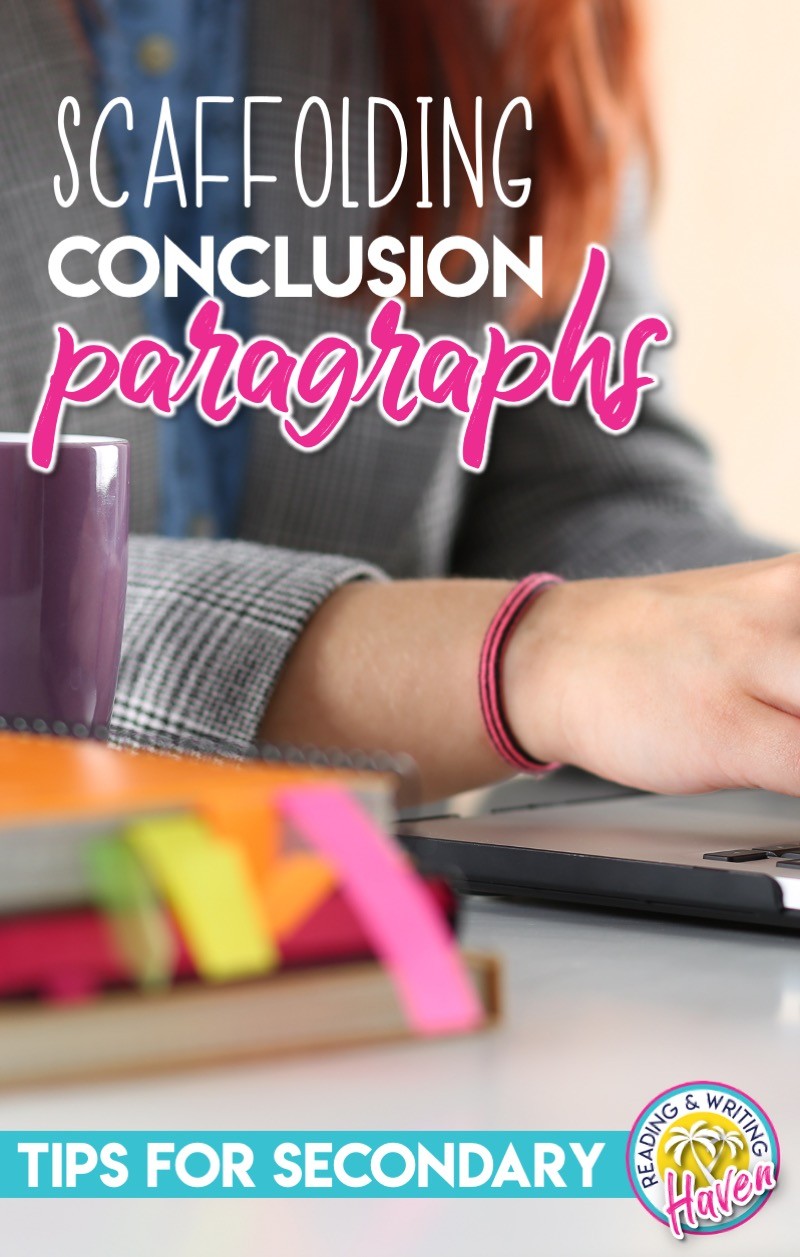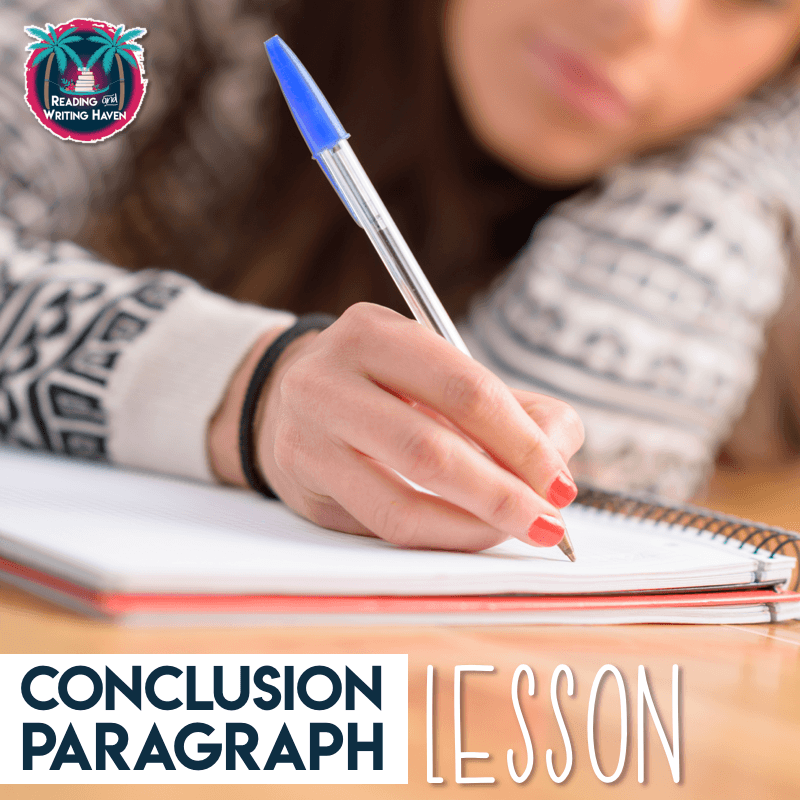Teaching Conclusion Paragraphs in Middle and High School
Looking for an instructional approach that will help students to write stronger conclusion paragraphs? You’ll find some ideas here.
And these are the reasons why uniforms should not be required. They are boring. Uniforms strip students of their individuality. Also, they are expensive. Thank you for reading my essay. P.S. – don’t make students wear uniforms.
Painful. Many conclusion paragraphs are, really. That’s why it’s important that we do the best job humanly possible to move students away from this type of superficial closure to something more meaningful. Keep reading for several ways to make teaching conclusion paragraphs more effective. In this post, I’m looking at these strategies through an argumentative writing lens, but they can be applied to other genres as well.
TIPS FOR TEACHING CONCLUSION PARAGRAPHS
1. Break it down.
Not all students, but many (especially younger students or struggling writers) appreciate knowing exactly what they are supposed to write in a conclusion paragraph. At the beginning of a writing unit, I give students a prompt and ask them to respond.
I have used the prompt, “Are iPads helping or hurting your education?” because we are a 1:1 school; then, I assess students with this pre-assessment rubric. The interesting part of this process, to me, is how confused many students are when it comes to the introduction and conclusion. Students want to know how to make those paragraphs more than one sentence each. They just aren’t always sure.
As we begin our argumentative writing unit, I generally know that this is an area of confusion for students (based on the pre-assessment data I collect); so, I scaffold by using an acronym I created.
X – Explain the thesis again.
Y – State WHY the audience should care.
Z – Zing readers with a lasting thought.
Not every student will need to learn an acronym or follow this “formula” when writing a conclusion paragraph. Still, when students are just beginning to build their confidence as writers, structure can help alleviate writer’s block and frustration.
(And yes, I came up with acronyms for introduction and body paragraphs, too!)
2. Avoid summaries.
It’s hard for students to break the habit of summarizing their essay in the conclusion. Recapping the main points of the essay is not terrible, but it’s hard to do it well. Usually, students just end up rewording their topic sentences. Instead, I’ve begun encouraging them to answer the question, “Why should we care?” They have made an argument, cited research, and elaborated on it. In the conclusion, focusing on synthesizing all of that information is important. Synthesis is more memorable than summary.
3. Teach framing.
Hands down – one of the trickiest parts of writing a solid essay is ending it memorably. To “zing” means to move swiftly with energy, enthusiasm, and liveliness. That’s what I tell my students to do when they end their papers. Their “clincher” or “zinger,” as some of my students have begun calling it, should be concise, but it should stick in the audience members’ minds long after they finish reading the paper.
So how to teach that? Framing is one of the most effective ways I’ve found to help students bring their essays full-circle. I tell them that they need to refer back to their hook in their conclusion. For instance, consider the following:
FRAMING EXAMPLE
Thesis Statement: Internet access should be limited during the school day.
Hook: Quicksand is defined as “an area where fine sand, silt, or clay floats on water. These sand, clay, and silt particles are interspersed with the water molecules, creating a weak bond that holds it all together,” according to How Stuff Works (Bonsor). When people step into quicksand, the weak bonds break, and their movements while trying to escape cause them to sink deeper into the trap, much like an early exposure to the Internet can lead to addiction and obsession.
Zinger: Like quicksand, the Internet ensnares students before they even know what has happened. Once submerged, teenagers often can’t escape. Because the addictive clutches of the Internet can suck students in before they are able to defend themselves, adults should set healthy boundaries to guard teenagers against the fearsome and compelling force.
In this example, the writer links the idea of quicksand and the Internet in both the introduction and the conclusion. That’s the goal. End where you start, but do it in a way that readers will remember. Teach students to add drama (but not too much), and appeal to readers’ emotions in order to create a lasting effect.
And those are some of my best tips for teaching conclusion paragraphs. Scaffolding is an important piece to supporting struggling writers. When students are ready to be released from the scaffolded elements, we peel them back and let them wow us with their skills. Until then, our goal is to create lessons students will remember and skills they will use to be successful after they walk out of our classroom.
RELATED READINGS:
- How to Teach Introduction Paragraphs
- 5 Ways to Use Body Paragraph Examples
- Scaffolding the Research Topic Selection Process
RELATED RESOURCE:
This is the resource I use to teach conclusion paragraphs. It contains a graphic organizer for the acronym and all of the guidance / tips from this post. Click on the image below to view the details.


